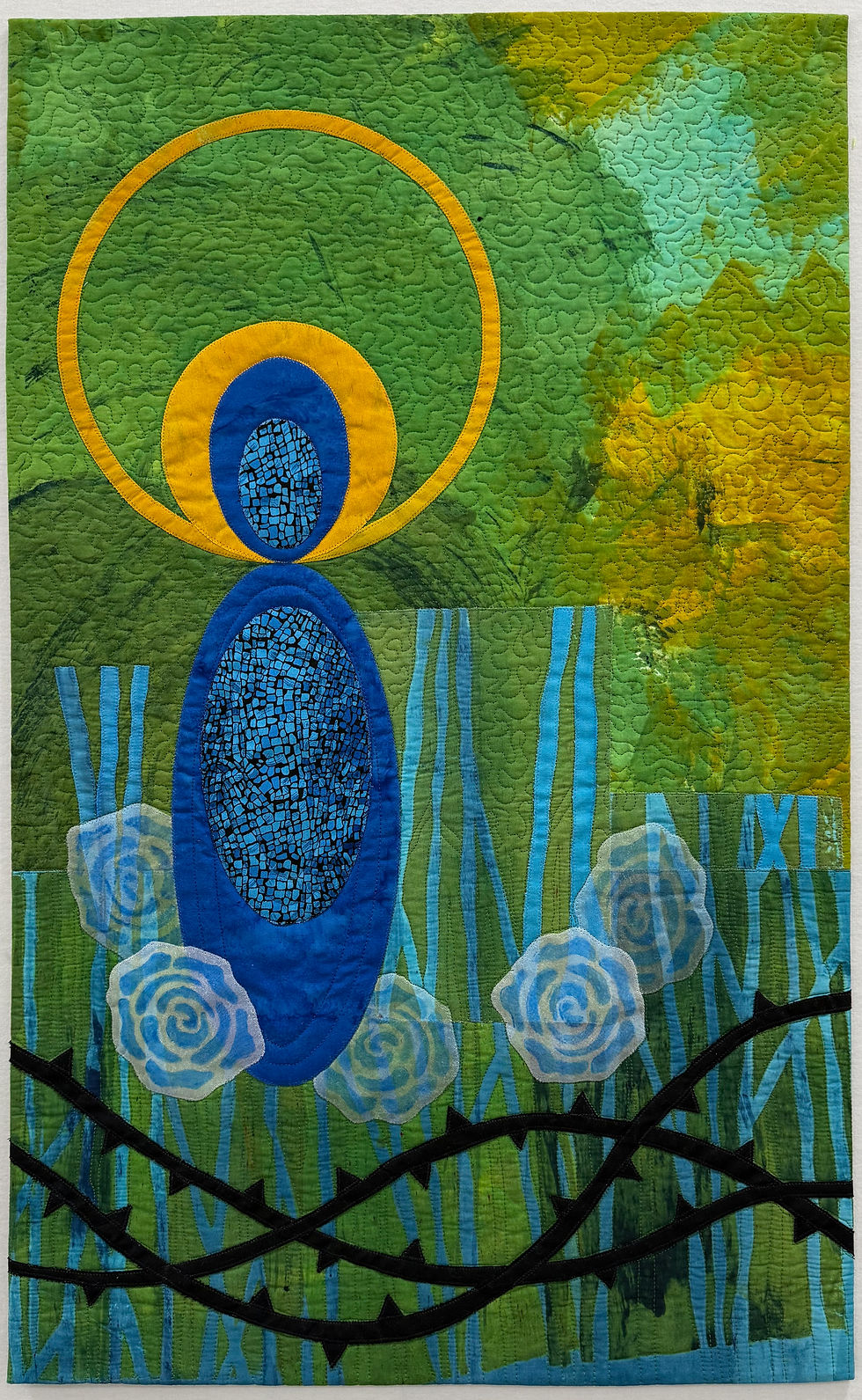The Essence of the Haiku - Uta Lenk
- Uta Lenk

- Oct 31, 2023
- 2 min read
Having studied literature in my former life I have a bit of a thing about formality aspects of literature. It’s been a long time since I have regaled in analysing prose texts for biographical connections, sociological implications and historical accuracies. But formal matters of some poetry genres are givens, as for example with Sonnets or the very specific form of the originally Japanese poetry form of Haiku which has by now gained recognition around the world, and in many different languages.
Whereas I had once embarked on the self-set task of learning all Shakespeare sonnets by heart (I got to a point where I knew about 60 of them, which is not quite 50%) I was never close enough to Japanese literature to develop an emotional relationship with the Haiku. But I know the basic facts. So for this particular challenge, I wanted to write a Haiku about these well-known basic facts, and turn that into a quilt. Vague thoughts included ‘japanese fabrics’ (I had some already) and a large red circle to resemble the Japanese flag.
A bit of wiggling around and consulting with my friend Kathleen Loomis, who has been ‘doing’ poetry from newspaper texts for a long time, and sometimes there is a Haiku among there, and who is therefore much more familiar with the spirit of the genre, led to a little Haiku on the formal aspects of a Haiku.
I handwrote it on a piece of paper, enlarged it on the copy machine, and traced it onto transfer paper so it could be transformed onto to a fabric top.

That idea of a fabric top had by then been stripped of the red circle as I had come across the remainder of the vintage kimono from a former project with Kathy, which I had also used for the ‘Bridges’ challenge.

The text of the Haiku runs once from down to up on the left side of the quilt, fused and raw edge appliquéd from some additional Japanese fabric I had acquired at Festival of Quilts from Janice Gunner, and the numbers cut from the fabric I had custom printed from my son’s handwriting. The full text appears also in the right hand upper corner in a smaller version, stitched by machine.

One special characteristic of the Haiku is the total of 17 syllables, and diving into my treasure box of buttons I found a set of 17 buttons from a former dress of mine that I attached to the top.

Seed stitching in certain areas of the top fulfilled an aching need for handstitching.

Then I went on a lengthy train ride to go for a job internview in northern Germany and took the Haiku along, and a few threads, not knowing what would happen on the trip, nothing was seriously planned. This is how it looked after I returned.

I had added some areas of Cretan stitch in yellow.


Unfortunately, this is the current condition of the piece which will not change before the end of November, after I will have returned from a Trip to the US.



Comments